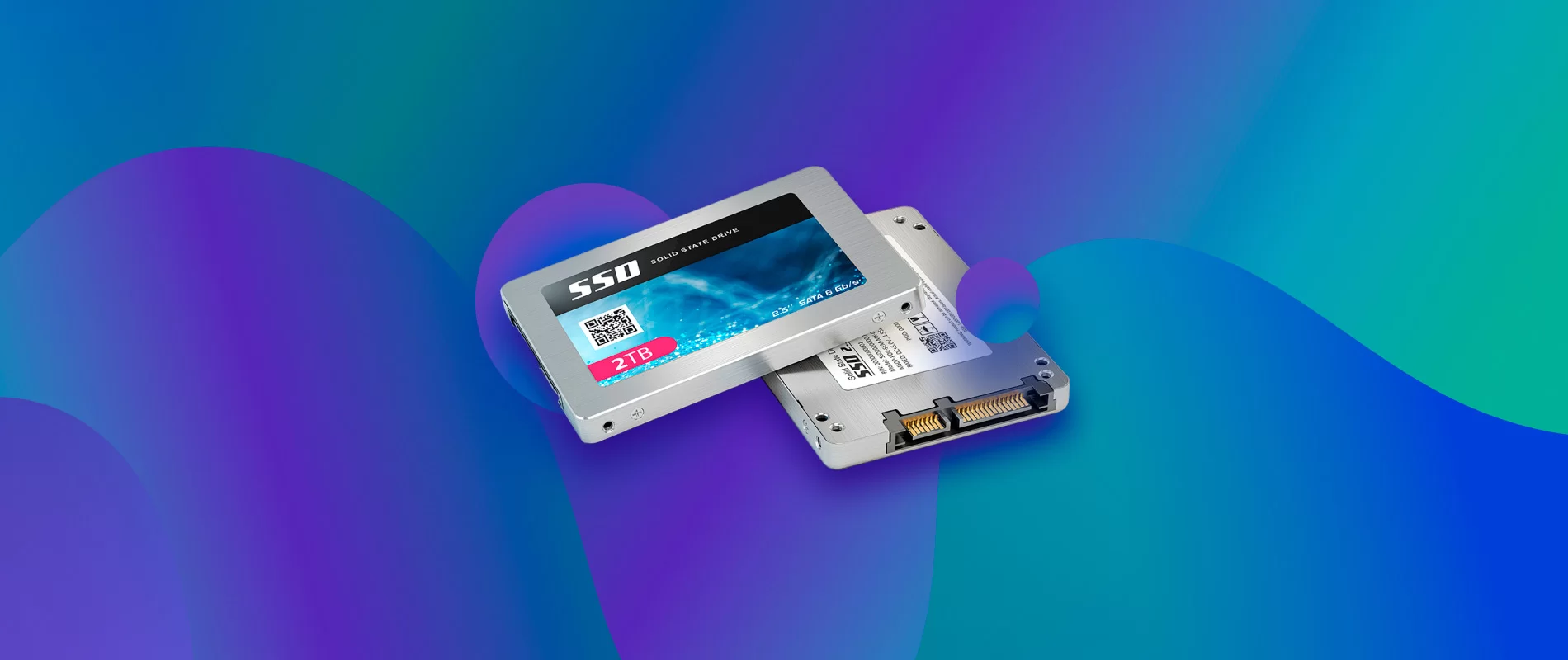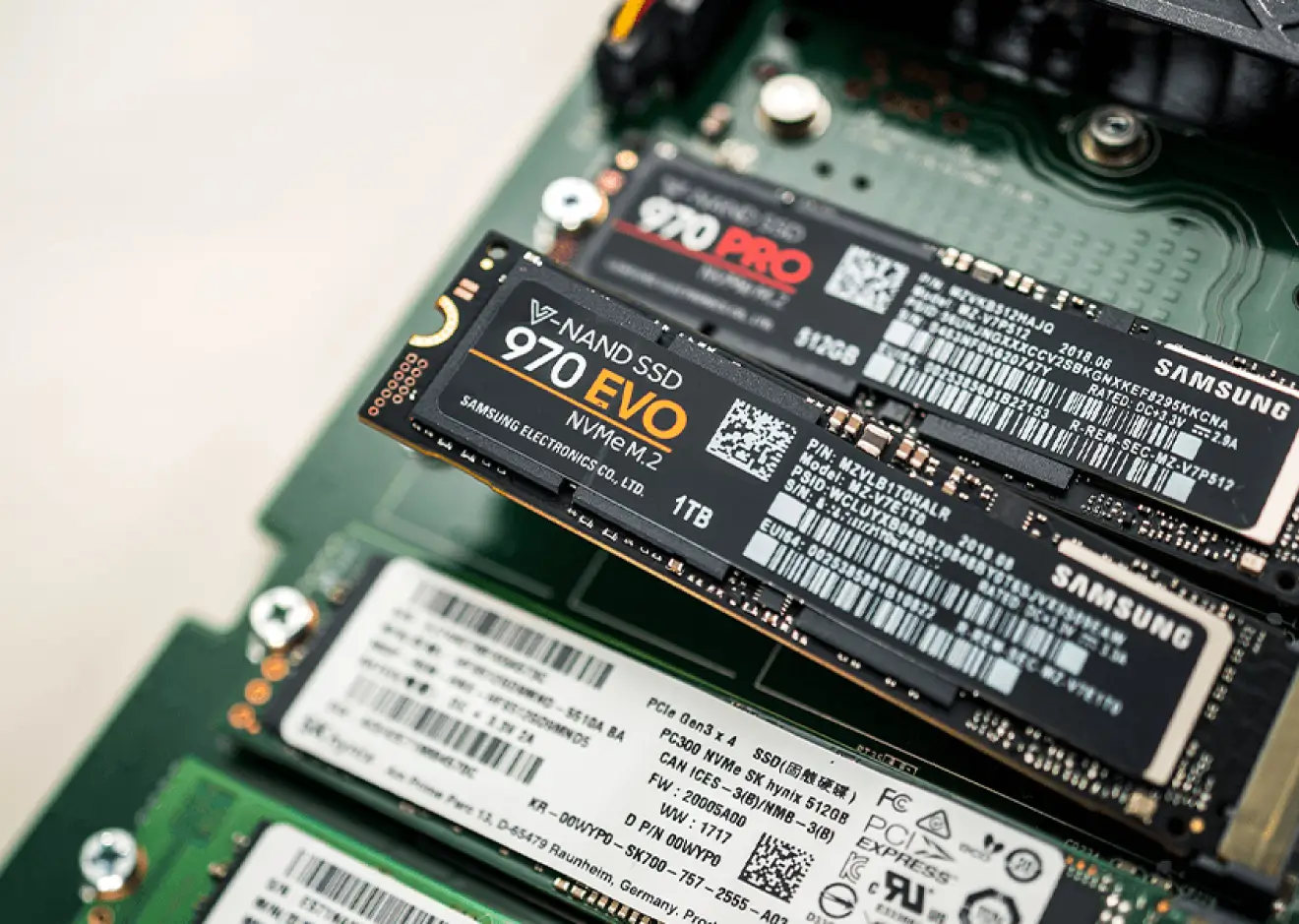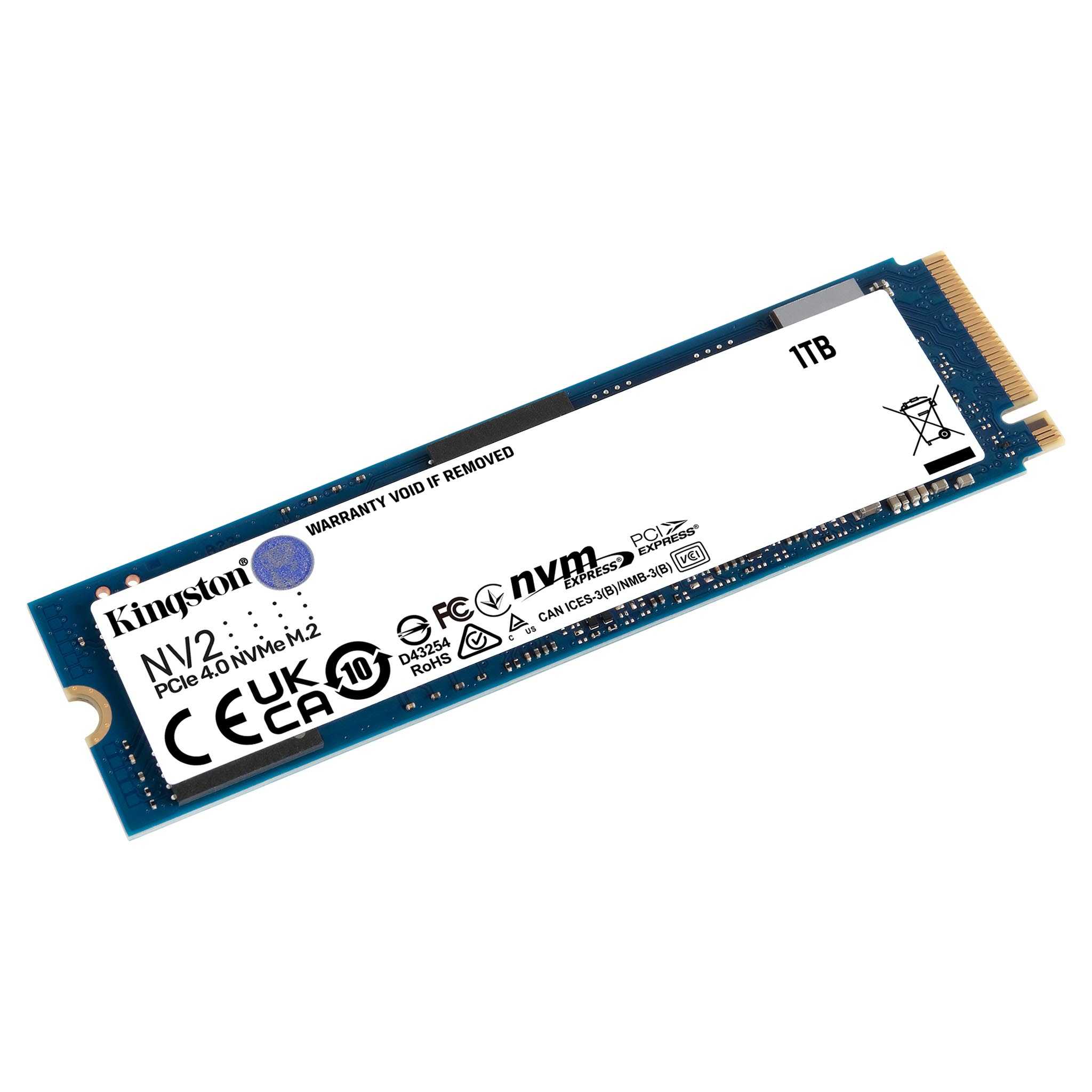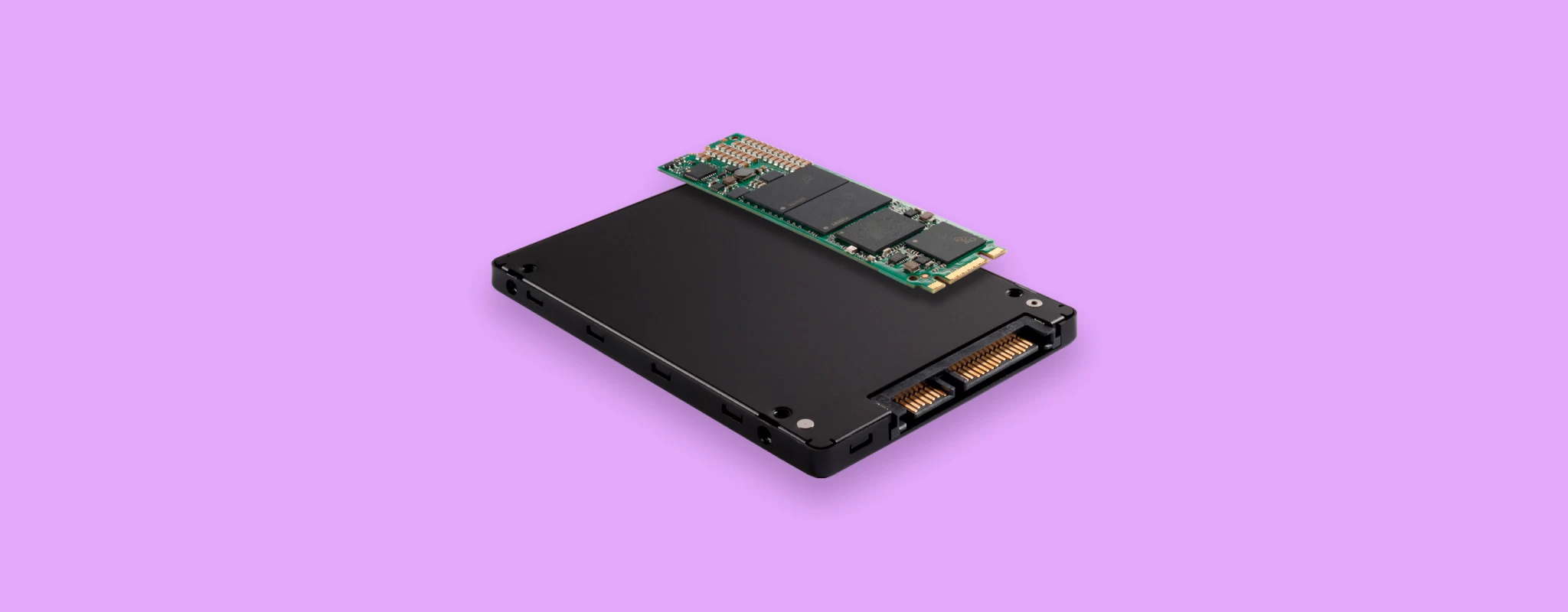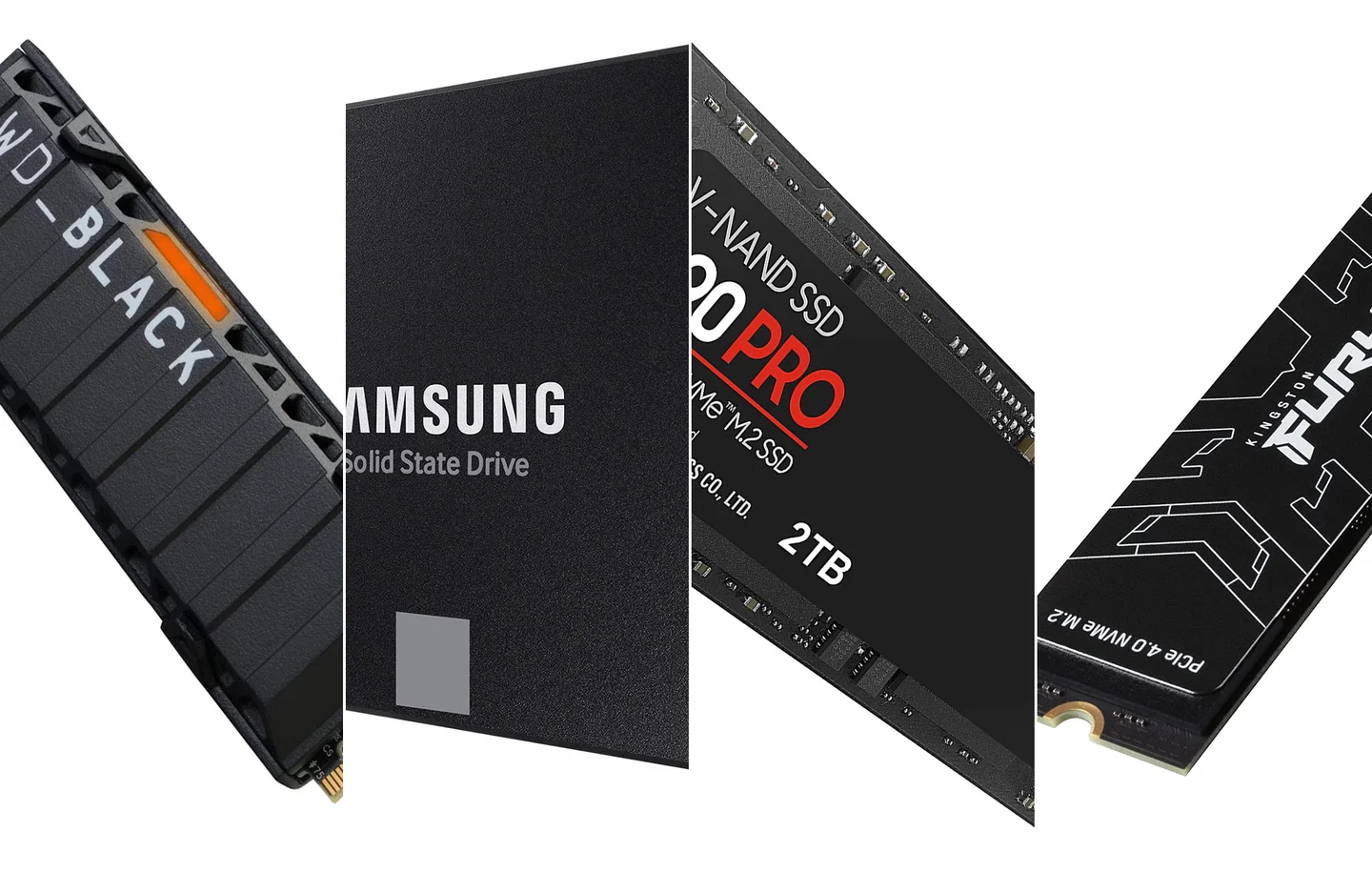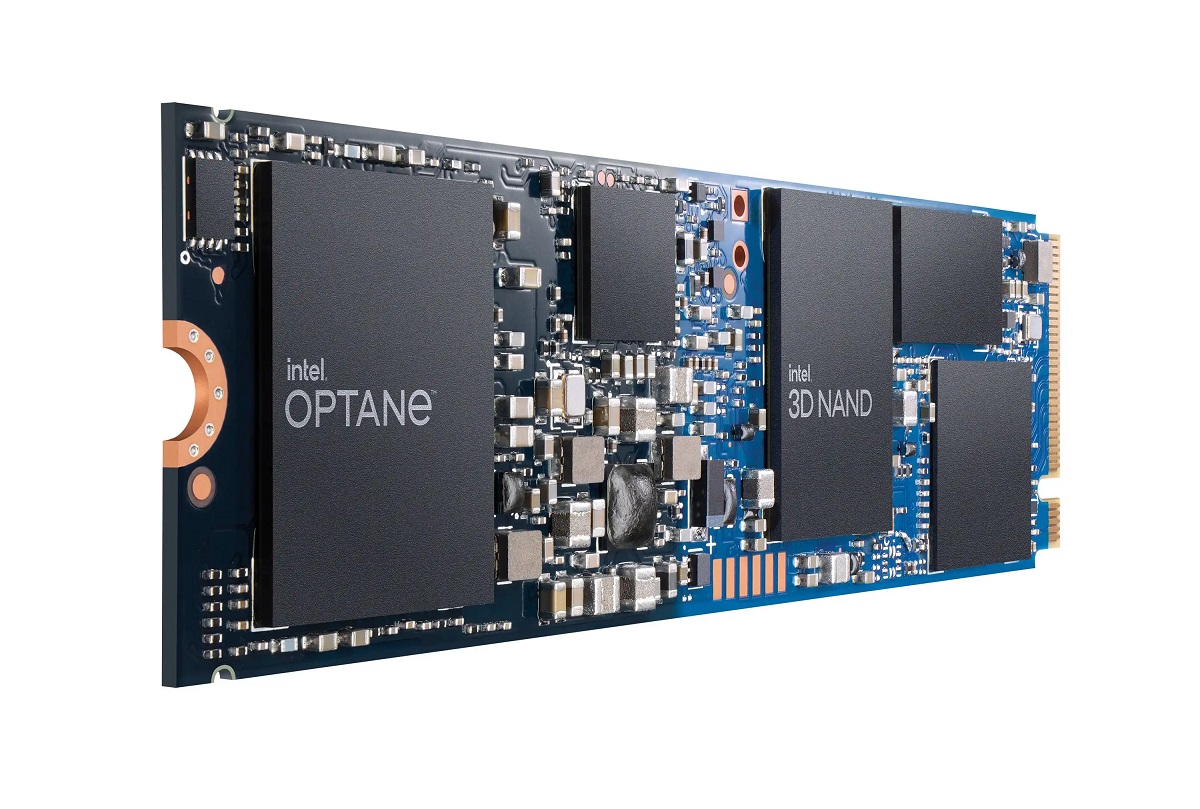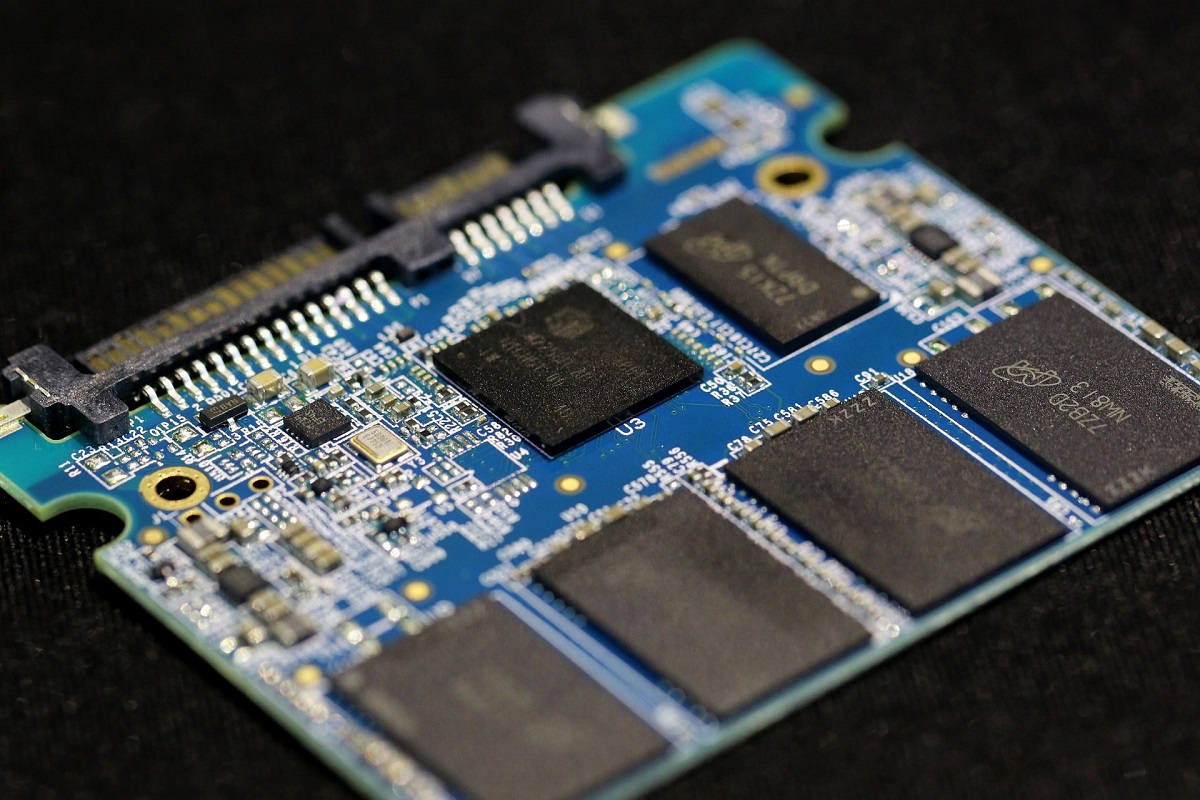Introduction
Intel Solid State Drives (SSDs) have gained popularity for their reliability and fast performance. However, despite their robust design, there are instances when a dead Intel SSD can pose a significant challenge. When an SSD fails, it can lead to data loss and can be a nightmare for individuals or businesses who rely on their stored information.
In this article, we will explore the methods to retrieve data from a dead Intel SSD. We will discuss the signs that indicate a dead drive, precautions to take before attempting data recovery, and various recovery methods you can try.
Understanding the intricacies of SSDs is essential when facing data loss issues. Unlike traditional hard drives that use mechanical rotating platters, SSDs store data on flash memory chips. These chips can deteriorate over time due to excessive read/write operations, power surges, or other hardware failures. In some cases, the firmware or controller chip can also be the culprit behind a dead Intel SSD.
When an Intel SSD dies, you may experience various signs indicating a failure. These include the drive not being detected by the computer, frequent crashes or system freezes, the SSD not responding, or receiving error messages when attempting to access the drive. These signs can be alarming, as they indicate potential data loss and the need for immediate action.
Before attempting to retrieve data from a dead Intel SSD, it is crucial to take some precautions. Firstly, it is essential to create a backup of your important files regularly to avoid loss and minimize the impact of a dead SSD. Secondly, ensure that you have sufficient power backup and voltage stabilization to prevent power fluctuations that might damage the drive. Lastly, always handle the SSD with care, avoiding physical shocks or drops that could worsen the situation.
Now that we have a basic understanding of Intel SSDs and the precautions to take, let’s explore the different methods you can try to retrieve data from a dead Intel SSD. These methods range from simple troubleshooting steps to more advanced techniques that may require professional assistance. Remember, attempting these methods does not guarantee success, and it is always recommended to seek professional help if you are unsure or dealing with critical data.
Understanding Intel Solid State Drives (SSD)
Intel Solid State Drives, commonly known as SSDs, are a type of storage device that uses non-volatile flash memory to store and retrieve data. Unlike traditional hard drives that rely on spinning disks, SSDs have no moving parts, which makes them faster, more reliable, and less susceptible to physical damage. Intel, a renowned technology company, produces high-quality SSDs that are widely used in both personal and enterprise environments.
One of the key advantages of Intel SSDs is their speed. Compared to traditional hard drives, SSDs offer significantly faster data access and transfer rates. This speed is attributed to the absence of mechanical moving parts and the ability of flash memory to access data almost instantly. As a result, applications and files load quicker, boosting overall system performance and improving user experience.
Another critical aspect of Intel SSDs is their reliability. Without any moving parts, there is no risk of mechanical failure or data loss due to physical damage. This makes SSDs highly resilient to shock, vibration, and other external factors that may impact traditional hard drives. Intel SSDs also have built-in error-correction algorithms and wear-leveling technologies that enhance data integrity and increase the lifespan of the drive.
Intel SSDs are available in various form factors, including 2.5-inch drives for laptops and desktops, M.2 drives for ultra-thin and compact devices, and PCIe drives for high-performance computing. These different form factors allow users to choose the SSD that fits their specific requirements and interface compatibility.
Additionally, Intel SSDs offer a range of storage capacities to accommodate different storage needs. Whether you need a small capacity drive for basic computing tasks or a high-capacity drive for multimedia production and data-intensive applications, Intel SSDs provide options to cater to diverse user demands.
Intel also prioritizes data security with features like self-encryption, secure erase, and hardware-based encryption technologies built into their SSDs. These features ensure that sensitive data remains protected and can be securely erased when required, providing peace of mind to users who handle confidential information.
Overall, Intel solid state drives are known for their speed, reliability, and advanced features that prioritize data security. By understanding the unique characteristics of Intel SSDs, you can leverage their benefits and make informed decisions when it comes to storage solutions for your personal or business needs. With their innovative technology and commitment to quality, Intel continues to be a trusted name in the SSD market.
Signs of a Dead Intel SSD
As with any storage device, Intel Solid State Drives (SSDs) can encounter issues that render them unusable or “dead”. It is important to be able to identify the signs of a dead Intel SSD to take appropriate action and prevent potential data loss. Here are some common signs that indicate a dead Intel SSD:
- Drive not detected: The most obvious sign of a dead Intel SSD is when your computer or device fails to detect the drive. This can manifest as the SSD not appearing in the BIOS or Disk Management utility.
- Frequent system crashes or freezes: If you notice your system experiencing frequent crashes or freezes, it could be a sign of a failing Intel SSD. As the SSD deteriorates, it may struggle to read or write data effectively, leading to system instability.
- SSD not responding: When you try to access files or folders stored on the Intel SSD, and the drive does not respond or becomes unresponsive, it may indicate a dead SSD. This can occur due to various issues, such as a faulty controller chip or firmware corruption.
- Error messages: If you encounter error messages indicating read or write errors, data corruption, or bad sectors when attempting to access the Intel SSD, it could indicate a failure in the drive. These error messages may appear during bootup or when accessing specific files or folders.
- Slow performance: A once-speedy Intel SSD suddenly performing significantly slower than usual can be a sign of a dead drive. This could be due to the deterioration of the flash memory chips or other hardware components within the SSD.
It is important to note that these signs can also be indicative of other issues, such as software conflicts or driver problems. Therefore, it is essential to isolate the cause and verify if the SSD is indeed dead before proceeding with any data recovery attempts.
If you encounter any of these signs, it is recommended to proceed with caution and not attempt any DIY repairs unless you have experience and expertise in handling SSDs. Incorrect troubleshooting methods can potentially worsen the situation and lead to permanent data loss. Instead, consider seeking professional assistance from data recovery specialists who specialize in dealing with dead or damaged SSDs.
Remember that prevention is always better than cure. Regularly backing up your important data to an external storage device or cloud-based service can mitigate the impact of a dead Intel SSD and ensure that your valuable files remain preserved.
By being aware of these signs, you can promptly recognize a dead Intel SSD and take the necessary steps to recover your important data, minimizing the potential loss and inconvenience caused by a failed SSD.
Precautions Before Retrieving Data
Before attempting to retrieve data from a dead Intel Solid State Drive (SSD), it is essential to take certain precautions to maximize the chances of successful data recovery and avoid further damage to the drive. Here are some important precautions to consider:
- Create a backup: Before attempting any data recovery operations, it is crucial to create a backup of your important files if possible. This ensures that even if the recovery process fails or causes further damage to the SSD, you will still have a copy of your valuable data.
- Ensure power stabilization: Power fluctuations can have a negative impact on the SSD and may lead to further damage. Ensure that your computer system has stable power and consider using a UPS (uninterruptible power supply) to protect against sudden power outages or surges.
- Avoid physical shocks: Physical shocks or drops can potentially worsen the condition of a dead SSD. Handle the drive with care and avoid subjecting it to unnecessary physical stress.
- Use proper ESD protection: Electrostatic discharge (ESD) can damage delicate electronic components in the SSD. When handling the SSD, use proper ESD protection measures such as wearing an anti-static wristband or working on an anti-static mat.
- Do not disassemble the SSD: Opening up the SSD and attempting to repair it yourself is not recommended unless you have the necessary expertise and access to a cleanroom environment. Disassembling the SSD can further damage the drive and make data recovery more challenging for professionals.
- Do not format or initialize the SSD: In an attempt to “fix” the dead SSD, some users may consider formatting or initializing the drive. However, this action can lead to permanent data loss. It is essential to refrain from any actions that may overwrite or erase data on the SSD.
- Document any unusual sounds or behavior: If you notice any unusual sounds, such as clicking, grinding, or whirring noises, document them. These sounds can provide valuable insights to data recovery professionals and help determine the underlying issue with the SSD.
- Consider professional assistance: Data recovery from a dead SSD can be a complex and delicate process. If your data is critical and you are unsure about recovering it yourself, it is recommended to seek professional assistance from reputable data recovery service providers specializing in SSD recovery.
These precautions are crucial to ensure the safety of your data and increase the chances of successful data recovery from a dead Intel SSD. Keep in mind that attempting DIY recovery methods without proper knowledge or expertise can lead to permanent data loss or further damage to the drive. By taking the necessary precautions, you can approach the data recovery process with care and give yourself the best opportunity to retrieve your valuable data successfully.
Method 1: Checking the Connections
Before diving into complex data recovery methods, it’s essential to start with the basics. In some cases, a dead Intel Solid State Drive (SSD) may simply have loose connections or faulty cables, contributing to the drive not being recognized or functioning properly. By checking the connections, you may be able to resolve the issue without the need for further intervention. Here is a step-by-step guide on how to check the connections of your Intel SSD:
- Power off your computer: Before working with any internal components, make sure your computer is powered off and unplugged from the power source. Safety should always be a priority.
- Open the computer case: Depending on your computer model, you may need to remove the side panel or open specific compartments to access the internal components. Refer to the manufacturer’s instructions or consult a professional if you’re unsure how to do this properly.
- Locate the Intel SSD: Once you have access to the internal components, locate the Intel SSD. It is a small rectangular device typically connected to the motherboard or a dedicated SSD slot.
- Check the power and data cables: Ensure that the power cable and the data cable connected to the SSD are securely plugged into their respective ports. Sometimes, a loose connection can prevent the SSD from functioning correctly. Gently push the cables in to ensure a firm connection.
- Inspect for any physical damage: While checking the connections, take a moment to inspect the SSD for any visible physical damage. Look for bent pins, broken connectors, or signs of corrosion. If there is physical damage, it is recommended to seek professional assistance as attempting repairs yourself can worsen the situation.
- Close the computer case: Once you have checked and secured the connections, carefully close the computer case and make sure all screws or fasteners are properly tightened. Ensure that no cables or components are obstructing the case closure.
- Power on the computer: Plug the computer back into the power source and turn it on. Check if the Intel SSD is now being detected by the system. Enter the BIOS or Disk Management utility to verify if the SSD is recognized and accessible.
- Test the SSD: To further ensure that the SSD is functioning correctly, you can run diagnostic tests provided by Intel or third-party software. These tests can help identify any potential issues with the SSD and provide more insights into its condition.
By checking the connections of your Intel SSD, you may be able to fix minor issues and restore proper functionality without the need for advanced data recovery methods. However, if the SSD is still not working or being detected, it may be necessary to move on to other data recovery options, such as utilizing data recovery software or seeking professional assistance.
Method 2: Using Data Recovery Software
If your Intel Solid State Drive (SSD) is still not functioning despite checking the connections, you can try using data recovery software to retrieve your important files. Data recovery software is designed to scan the SSD for any recoverable data and create a virtual representation of the lost files. Here is a step-by-step guide on using data recovery software:
- Select a reliable data recovery software: There are numerous data recovery software options available in the market. Choose a reputable and reliable software that supports SSD recovery and has positive reviews from users. Examples of popular data recovery software include EaseUS Data Recovery Wizard, Recuva, and Stellar Data Recovery.
- Install the software and connect the Intel SSD: Download and install the chosen data recovery software on a functional computer. Connect the dead Intel SSD to this computer using a suitable adapter or enclosure, ensuring proper connections for power and data transfer.
- Launch the data recovery software: Open the data recovery software and select the appropriate recovery mode. Most recovery software offers options like quick scan, deep scan, or specific file recovery. It is recommended to start with a quick scan and then proceed to a deep scan if the initial scan does not yield satisfactory results.
- Select the Intel SSD as the target drive: In the data recovery software, choose the connected Intel SSD as the target drive for the scan. Ensure that you are selecting the correct drive to avoid accidentally scanning and modifying other drives or partitions.
- Start the scan: Initiate the scanning process and allow the software to analyze the SSD for recoverable data. This may take some time depending on the size and condition of the drive. Be patient and avoid interrupting the process.
- Preview and recover the files: Once the scan is complete, the data recovery software will present a list of recoverable files. Preview the files to confirm their integrity and select the files you want to recover. Choose a safe storage location to save the recovered files, preferably on a different drive to avoid overwriting any data on the dead SSD.
- Execute the file recovery: After selecting the files, initiate the file recovery process. The software will restore the selected files to the specified location. Again, it is crucial to avoid saving the recovered files directly onto the dead Intel SSD to prevent potential data overwriting.
Using data recovery software can be an effective method to retrieve lost data from a dead Intel SSD. However, it is important to note that the success of data recovery depends on the condition of the SSD and the effectiveness of the software. If the data recovery software fails to recover your files or the SSD remains unresponsive, it may be necessary to explore other recovery options or contact a professional data recovery service.
Remember to assess the risks involved with data recovery software, as incorrect usage or improper recovery attempts can lead to permanent data loss. It is always recommended to seek professional assistance if you are unsure or dealing with critical data that needs to be recovered from a dead SSD.
Method 3: Freezing the SSD
When faced with a dead Intel Solid State Drive (SSD), an unconventional method that some users have tried is freezing the SSD. Freezing the SSD involves subjecting it to extremely low temperatures with the hope of temporarily restoring its functionality and allowing data recovery. While this method may sound unusual, it has been known to work in certain cases. Here is a step-by-step guide on how to freeze the SSD:
- Ensure a sealable plastic bag: Get a sealable plastic bag that is large enough to accommodate the Intel SSD. It is essential to have a bag that can be tightly sealed to prevent moisture from damaging the drive.
- Wrap the SSD in an anti-static bag or cloth: Before placing the SSD into the plastic bag, wrap it in an anti-static bag or cloth to provide an additional layer of protection against static electricity.
- Place the wrapped SSD in the plastic bag: Put the wrapped SSD into the plastic bag, ensuring that it is fully sealed to prevent any moisture from entering. It’s recommended to press out any excess air to reduce the risk of condensation inside the bag.
- Place the bagged SSD in the freezer: Carefully place the bagged SSD in the freezer and ensure that it is positioned where it won’t be damaged by other items. It is important to note that the freezer should be set to a temperature below 0°C (32°F).
- Leave the SSD in the freezer for several hours: Allow the SSD to remain in the freezer for at least a few hours, or even overnight. The extended exposure to cold temperatures can potentially shrink any loose internal components temporarily, allowing the SSD to function again temporarily.
- Remove the SSD from the freezer: After the designated time, take the SSD out of the freezer and quickly connect it to a computer for data recovery. It is crucial to work swiftly to maximize the time before the SSD begins to warm up.
- Retrieve your data: Once the SSD is connected, immediately attempt to retrieve your important data. Copy the files to a separate storage device to avoid loss if the SSD fails again.
It is important to note that freezing an SSD is a risky and unorthodox method, and its success is not guaranteed. This method should only be considered as a last resort when all other options have been exhausted. Freezing the SSD may temporarily restore functionality, but it does not address the underlying issues causing the failure. Therefore, it is crucial to immediately back up your data once the SSD is connected, as it may fail again soon after being removed from the freezer.
Keep in mind that freezing an SSD may also void any existing warranty, so it is essential to understand the risks involved before attempting this method. If you are uncomfortable with trying this method yourself or if your data is critical and warrants professional attention, it is recommended to consult a data recovery specialist who can provide expert assistance.
Method 4: Contacting a Professional Data Recovery Service
If all other methods fail or if you are not comfortable attempting data recovery yourself, it is highly recommended to contact a professional data recovery service for assistance with your dead Intel Solid State Drive (SSD). Professional data recovery specialists have the knowledge, experience, and specialized tools to handle complex data loss situations. Here’s what you need to know about contacting a professional data recovery service:
- Research and choose a reputable data recovery service: Start by researching and selecting a reputable data recovery service that specializes in SSD recovery. Look for companies with a track record of successful recoveries, positive customer reviews, and certifications from relevant organizations.
- Get in touch with the data recovery service: Contact the chosen data recovery service and explain the issue with your dead Intel SSD. Provide all the necessary details such as the model and capacity of the SSD, the symptoms you have observed, and any previous recovery attempts made.
- Receive an evaluation and quote: The data recovery service will evaluate the condition of your SSD and provide a comprehensive assessment of the chances of successful data recovery. They will also provide a quote for the recovery service, which may vary depending on factors such as the complexity of the recovery, the extent of the damage to the SSD, and the urgency of the situation.
- Provide consent and approval: If you are satisfied with the evaluation and quote provided by the data recovery service, you will need to provide your consent and approval to proceed with the recovery process. This may involve signing a service agreement and making the necessary payment arrangements.
- Submit your SSD to the data recovery service: Follow the instructions provided by the data recovery service to safely package and ship your dead Intel SSD to their facility. Ensure that you use proper packaging materials and consider using a reliable courier service with package tracking capabilities.
- Wait for the data recovery process: Once the data recovery service receives your SSD, their experts will perform the necessary procedures to recover your data. The time required for the recovery process can vary depending on the complexity of the situation and the workload of the service provider.
- Receive the recovered data: Once the data recovery process is completed, the service provider will send you the recovered data on a secure storage device or through a secure online transfer method. Review the recovered files to ensure the integrity and completeness of your data.
- Return of the original SSD: Depending on the service provider’s policies, they may safely dispose of the dead SSD or return it to you. Clarify this with the data recovery service before initiating the process.
By contacting a professional data recovery service, you can benefit from their expertise and increase the chances of successful data recovery from your dead Intel SSD. This option is especially crucial for valuable or critical data, as professionals have the necessary tools and knowledge to handle the most challenging data loss scenarios.
Although professional data recovery can be more costly compared to other methods, it provides a higher level of assurance and minimizes the risk of further damage or permanent data loss. Remember to choose a reputable service provider and maintain open communication throughout the process to ensure a smooth and successful data recovery experience.
Conclusion
Dealing with a dead Intel Solid State Drive (SSD) can be a frustrating experience, especially if valuable data is at stake. However, there are several methods you can try to retrieve data from a dead Intel SSD. By understanding the signs of a dead SSD and taking necessary precautions, you can increase the chances of successful recovery while minimizing the risk of further damage.
Checking the connections of the SSD is a simple and initial troubleshooting step that may resolve the issue if the connections are loose or faulty. Using data recovery software is another option to scan and retrieve files from the dead SSD, provided the drive is still recognizable by the computer. Freezing the SSD is an unconventional method that may temporarily restore functionality, but it should be considered a last resort and approached with caution. Finally, contacting a professional data recovery service is recommended for critical data or if other methods have been unsuccessful.
It is important to note that prevention is key in data loss situations. Regularly backing up important files to external storage or cloud-based services can mitigate the impact of a dead SSD. Additionally, ensuring stable power supply and handling the SSD with care can also help prevent premature failures.
Overall, dealing with a dead Intel SSD can be challenging, but with the right knowledge and approach, you can increase the chances of successfully recovering your important data. Remember to assess the situation, weigh the risks, and seek professional assistance when needed. By taking these steps, you can navigate the process effectively and safeguard your valuable data.







